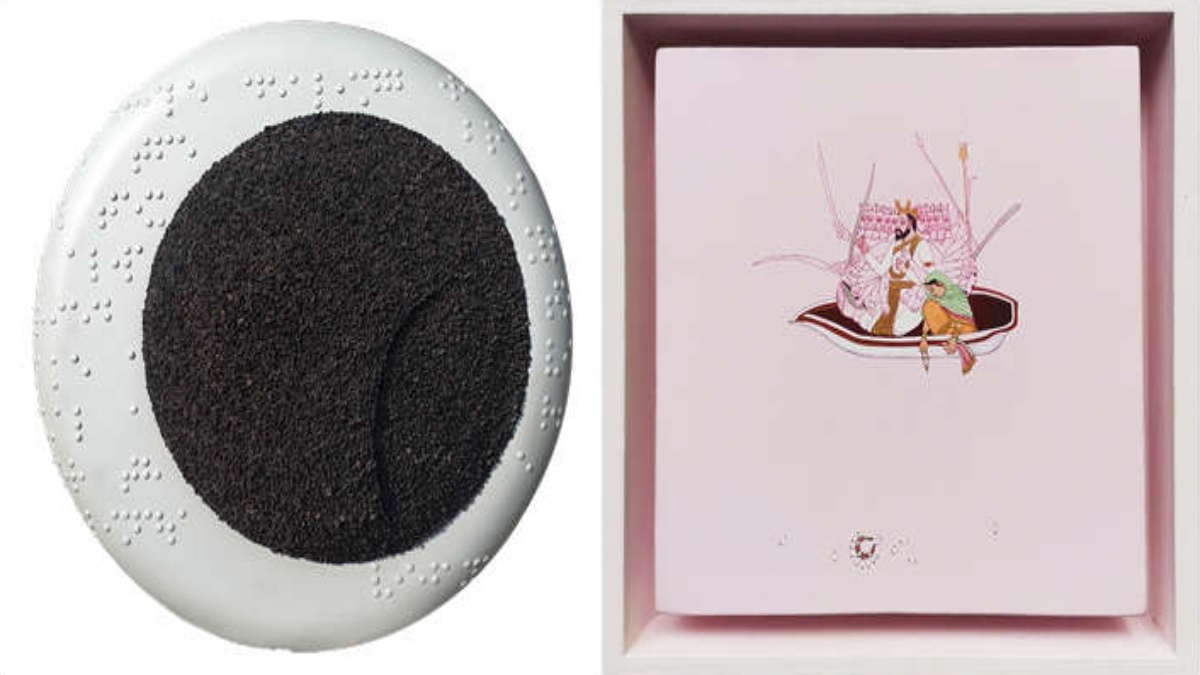A group exhibition titled Episteme was unveiled in the capital this week at Art Centrix Space. The exhibition features 33 works by 10 emerging Indian artists including Pinaki Ranjan Mohanty, Kundan Mondal, Amjum Rizve, Manish Sharma, Mainaz Bano, Tapas Biswas, Soham Raha, Sangam Vankhade, Pratik Raut, and Vijaya Chauhan exploring historical-cultural context through a contemporary lens via the senses.

Vijaya Chauhan, Innovative Eye, 2019; Mainaz Bano, Equilibrium, 2021; Vijaya Chauhan, Smart Association, 2016; Amjum Rizve, Interior Bloom, 2021.
On display were artworks involving mixed medium on canvas, marble sculpture and installations along with artworks based on Stoneware on Wood to name a few. The works in the show aim to address personal and interpersonal relationships with respective geographical areas along with their social, political and environmental history with the possibility of discourse.
According to Monica Jain, curator and Director of Art Centrix Space, an ‘episteme’ organises our sensorium, educates our attention and orients our material disposition towards the world around us. In a conversation with The Sunday Guardian, she said: “Episteme is the understanding of a world while going through what we are going through.”
If one really looked at the artworks on display, one would notice the struggle that is seen in the works. Jain agrees on the same and said that the artists’ biggest struggle was to not being “able to learn through community.” With the second wave of the coronavirus pandemic upon the country, it was a mental struggle for the artists.
Jain also noted that the struggle that hint of mental struggle that can be seen in some of these works are not just only of artists but also of those who are around their artists as well. “While they were showing personal struggles, they were also showing struggles of other people. If a person around you isn’t happy, then how would you be happy? And that is something that visually, needs to be presented,” she added.
Another thing for the curator was of immense importance was to ensure that a conscious effort was made to ensure that when people walked in to see the show, it was not as if they were entering a gallery which ensure that the works on display, rather than highlighting only the struggle side of things, help in providing a calming ambience for the viewer.
“None of these works have been taken off and put for the reason of selling. None of these (works) have been put up because I want to fill a wall. Each (artwork) is a label of love.”
Presenting 33 works from 10 different artists comes with a set of challenges and in the case of Jain, she said, it was more than just placing artworks on a wall. She said: “It was getting the artists out of their shell and getting them to talk. It (the process for the exhibition) started in April last year and during conversation, we realised that now we are in a lockdown and we have to talk. It took us this one-and-a-half year of just engaging.”
One of the things that the pandemic has brought upon is a newfound appreciation for art—whether it is through viewing artworks or purchasing them. Jain was upbeat about the newfound appreciation among people but said that the work has just started for art and artists to thrive. “We have to do a lot more. The ball has been set in motion unfortunately by the pandemic because people spend time at home. Now is when we need to create traction,” she said.
She concluded the conversation by adding, “They (the artwork) are all conversations. These are people who are talking about something so personal.”






















